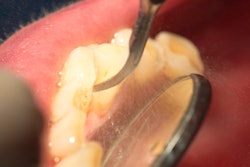
A little more than two decades ago, John Featherstone, PhD, set out to create a one-page tool to prevent caries. The result, caries management by risk assessment (CAMBRA) has come to redefine how the newest generation of dentists think about dental decay.
For CAMBRA's 21st anniversary, the Journal of the California Dental Association (CDA Journal) dedicated its entire January issue to the risk assessment tool and its use in professional settings. Featherstone was the lead author of two of the journal articles, which detail new changes that help make CAMBRA even more applicable to modern dental practices.
"The big difference here is that everything is evidence-based," Featherstone, dean emeritus and professor emeritus of the University of California, San Francisco School of Dentistry, told DrBicuspid.com. "People can take those papers and put them into practice. They're very practical guidelines."
An evolving tool
At the time of its creation, CAMBRA flipped the traditional thinking of dentistry on its head, Featherstone explained. Instead of trying to fix decay through restorative work, it aimed to resolve why decay was happening in the first place.
 John Featherstone, PhD, dean emeritus of the University of California, San Francisco School of Dentistry.
John Featherstone, PhD, dean emeritus of the University of California, San Francisco School of Dentistry."For decades, we have been taught and believe that if somebody has decay and you put a restoration in, then that will solve the problem. But it doesn't," Featherstone said. "Rather, it's like taking a rusty car and fixing the most obvious thing you can find. You may fix the door handle, but the underpart of the vehicle rusted out, and you didn't even see it."
CAMBRA has traditionally approached caries management by looking for clinical and biological risk factors and weighing them against protective factors. Various professional and consumer products and appointment schedules are then used to help stop new decay and promote oral wellness.
"CAMBRA evolved over time," Featherstone said. "In the 1990s and early 2000s, we were having a lot of individual success with individual patients, and we knew we were really onto something. We just didn't know what at the time."
The latest edition of the CDA Journal contains two updated versions of CAMBRA, one for patients up to 5 years and another for those age 6 and older. The updated versions have been trimmed to only include questions that have been scientifically validated. As a result, the tool is sleeker and more practical, Featherstone noted.
"The papers talk about things you can do with your patients," he said. "They talk about motivational interviewing, about bringing patients up to speed. The patients have to make the decision to help themselves. It's a cooperative agreement between the practitioner and the patient."
CAMBRA in practice
Since its creation, CAMBRA has been repeatedly validated as a caries prevention tool, particularly through studies conducted by university clinics. But new research is showing that it can have even more positive results in private practice.
In another study in the journal, researchers looked at the use of CAMBRA at several private practices in the San Francisco Bay Area. They found that only 25% of high-risk patients who experienced the CAMBRA method remained with a high caries risk two years later. Furthermore, business at the dental practices boomed, Featherstone noted.
“If a practice truly does embrace CAMBRA philosophy and CAMBRA techniques, the practice builds and becomes successful and happy.”
"If a practice truly does embrace CAMBRA philosophy and CAMBRA techniques, the practice builds and becomes successful and happy," he said.
While CAMBRA may be a highly effective tool for managing caries, it's also an entirely new way of thinking about dental disease for many private practitioners. Featherstone recommended dentists who want to use the tool start by educating themselves, such as by reading the free, downloadable edition of the CDA Journal.
The next step is to try CAMBRA with a few existing patients at higher risk for future decay. These are the patients who keep coming back with new decay at every appointment, Featherstone noted. After that, just follow the step-by-step guidelines and be aware that it may take some time to adjust to practicing in a prevention-oriented manner.
"The first time a practitioner does a risk assessment it can take 20 minutes ... even if I can do it in a couple minutes," Featherstone said. "It's the same as learning a new skill you might want to do. Think of little kids learning to walk."
Shift to prevention thinking
The updates and widespread implementation of CAMBRA may represent the beginning of a bigger shift in dentistry, one that rewards wellness rather than procedures. It's a shift that Featherstone believes is needed, even if it may take a while for insurers to come onboard.
"In the medical profession, wellness is starting to be rewarded," he said. "That's the way we need to go in dentistry."
CAMBRA may be one tool to assist with that transition, even if it's taken longer to get to this point than Featherstone may have predicted. But he noted that his vision for the tool is ultimately the same as 21 years ago.
"We were a little naive in what we thought it would take to accomplish," he said. "The content is somewhat different in places, but the vision is still the same."



















